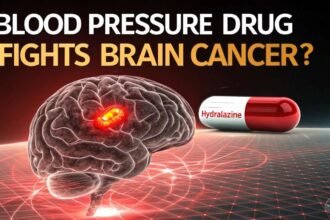Each person’s experience of attraction and intimacy is shaped by their unique combination of sexual orientation and identity. Some sexual orientations, including heterosexuality and homosexuality, have received a lot of attention and study, whereas others have been mostly ignored.
Auto Sexuality is a sexual orientation in which one is sexually attracted to one’s own self. This guide will examine autosexuality from all angles, including its definition and history, as well as the lived experiences of autosexuals and the difficulties they may face.
We’ll also talk about ways to make our communities safer and friendlier for those who identify as autosexual.
What Is Auto Sexuality?
One’s primary object of sexual desire is the self, a condition known as auto sexuality, auto romanticism, or autosexual orientation. Self-stimulating behaviors, such as self-appreciation and solitary sexual acts, may be indicative of this desire.
People who identify as autosexual tend to have strong feelings of self-love and contentment that don’t rely on having a romantic or sexual partner.
Autoeroticism, on the other hand, simply means self-stimulation or self-pleasure without indicating a sexual attraction to oneself alone, and it is important to distinguish between the two concepts.
Autoeroticism is an activity that may be engaged in by people of varying sexual orientations, while autosexuality focuses on the sexual orientation component of an individual’s identity.
Also Read: Soul Ties: Understanding the Powerful Connections that Shape Relationships
Origins and Expression of Auto Sexuality
Autosexuality’s backstory is still up for debate and study. Developmental variables in auto sexuality are probably as multifaceted as those in the emergence of any other sexual orientation. Simplistic explanations or generalizations regarding the motivations underlying a person’s sexual orientation should be avoided at all costs.
Some autosexuals may have always been attracted to other autosexuals, while others may have come out of the closet later in life. Each person’s sexual orientation and how they exhibit it might be unique, and so can the ways in which they experience auto sexuality.
While some autosexuals may place a premium on self-affirmation and adulation, others may prioritize self-pleasure and -intimacy.
Experiences of Auto-Sexual Individuals
Autosexual people face a unique and, at times, difficult set of challenges while navigating the world. The capacity to generate sexual excitement and fulfillment from inside oneself may provide autosexuals great happiness and a sense of agency. Independent and secure in their sexuality may emerge from a heart filled with love for oneself.
Autosexuality, however, is not problem-free. Autosexual people may feel excluded or misunderstood due to societal standards and expectations that prioritize romantic partnerships.
Those unfamiliar with auto sexuality may be skeptical of, or even mock, the idea of having a primary sexual attraction to oneself. Therefore, autosexual people may have a hard time convincing others of their orientation and gaining social acceptability.
Challenges and Misconceptions
The widespread assumption that autosexuality is a kind of narcissism or self-absorption is one of the most important barriers that autosexual people may face. Autosexuality is a sexual orientation that must be distinguished from the larger idea of self-love.
People who identify as autosexual may have a healthy respect for themselves, but this is different from arrogance.
There’s also the false belief that autosexuals can’t or don’t want to develop connections with other people. In actuality, autosexuals may have loving relationships with others while still being very attracted to themselves.
Also Read: Overcoming Fearful Avoidant Attachment: Tips and Strategies
Promoting Inclusivity and Understanding
It is crucial for society as a whole to promote acceptance and tolerance of people of diverse sexual orientations, including auto sexuality. Dispelling myths and misunderstandings about autosexuality requires education and awareness.
More compassion and understanding for those with different sexual orientations may result from open and civil discussions on the topic.
Furthermore, it is crucial to provide judgment-free zones where autosexual people may feel comfortable opening up about their identities and experiences. Those in search of belonging and acceptance may find the help they need from allies and support groups.












